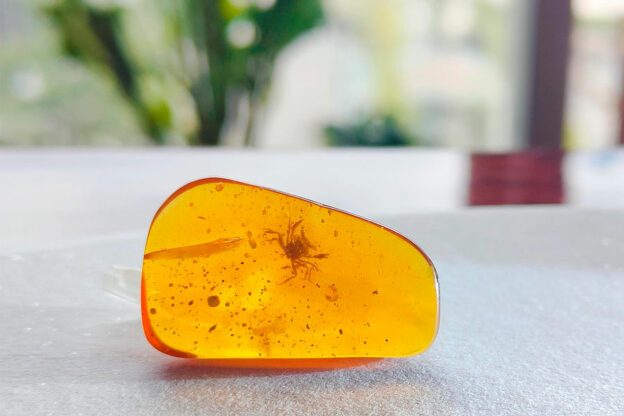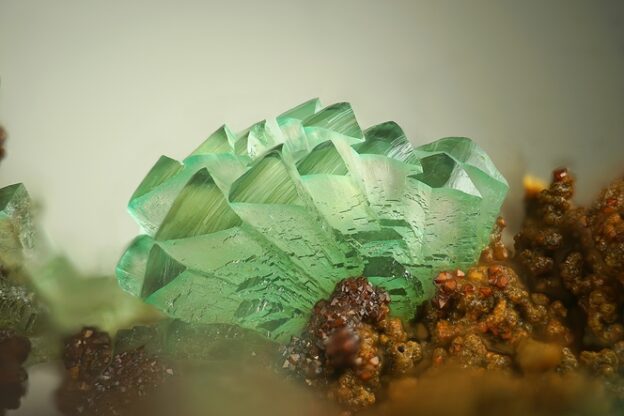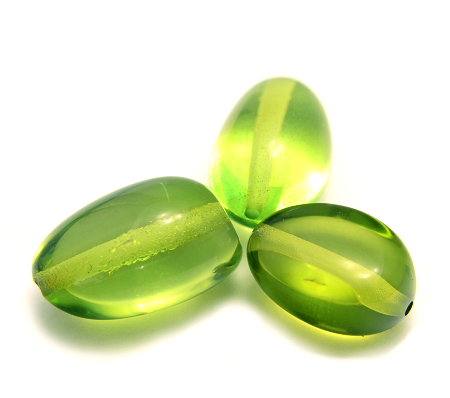Buranite – green amber of artificial origin
However, the reality is exactly the opposite. As soon as a green stone appears on the jewelry market, the fashion that has arisen for it instantly grows into a frenzy. A month or two, and now experts of different sizes are juggling with superlatives, and buyers who are languishing in queues demand more than two in one hand.
The psychology of color perception is amazing. It would seem: there is greener on Earth than any other. Especially when you consider that the sea water is green. Monotony is boring to a person, and therefore it is logical for a green decor to stay in a corral.
It would be okay if the stone is new, unknown and promising. But after all, old finds are quite capable of giving the consumer a honeymoon of fresh love! In fairness, it should be noted that such a spring in a relationship from time to time comes to stones of any color. In our case, it all started with amber …
The advertisement is engine of the trade
The jewelry market has long treated amber like a stepmother to Cinderella. Buyers were delighted with the democratic price of amber products. Collectors compiled impressive collections of petrified resins on modest budgets. Applied chemistry once every ten years created artificial analogs of natural stone, for the sake of fun painting their creations in completely unreal colors.
A sluggish amber happiness lasted for a hundred years, until one day young talented marketers conspired to promote the material so that they could make good money on it.
The advertising campaign, which began at the beginning of the new millennium, convinced the consumer: amber is valuable, and it is prestigious to pay a lot for it. Quickly saturated with amber of traditional honey color, the market drew attention to colored exotic – fossil fossils of resins of red, blue, green and other atypical shades.
This is where the holders of artificial amber technology got excited …
Sleight of hand, and no cheating!
Do not think that the tricks of Thiel Ulenspiegel, who sold manure under the guise of medicine to pompous burghers, are relevant today. Gross deception is not in honor these days! But no one tells the truth to the buyer either …
New-fashioned green stones, called buranite, are positioned by sellers in different ways. The most innocent are desperately cunning, calling the stone Arabian amber and telling tales about collecting green fragments at the bottom of the sea while mining for pearls. Others preach the theory of artificial aging of natural pine resin, suggesting the original natural origin of the sparkling green diva.
However, clever traders ignore the questions of the genesis of buranite, but reasonably reason about its outstanding (in comparison with real amber) physical and aesthetic properties.
What sellers are silent about
Experienced jewelry market participants remember how various imitations of amber appeared in different years. Bernite, as the most beautiful analogue of a precious stone, turned out to be so self-sufficient that soon the name “artificial amber” disappeared from its price tags.
Not only did the producers learn to tell the burnite the characteristics of the best amber varieties, they began to change the chemical composition of the polymer so that the solidifying artificial resin mass acquired an exotic color!
Needless to say, the most popular varieties of bernite are green stones?
What distinguishes blizzard from bernite?
The most notable difference is the two letters in the title. Such transformations in trade names are common: the pronunciation traditions of letter combinations vary from language to language.
Perhaps blizzard is a product of the updated technology for the production of bernite? It is not excluded. However, the improvement of the production process does not change the principle of making artificial green amber.
But the consumer properties of buranite – this is noted by all experts – surpass the parameters of the samples of bernite half a century ago. First of all, the saturation and depth of color of buranite remain at their original level, regardless of the operating conditions of the product. Simply put, the stone does not scratch, does not fade, does not crack and does not grow cloudy even on the hand of the concrete worker of the Sahara culvert.
Serious jewelers at one time neglected Bernite, but modern jewelry with buranite is exhibited at exhibitions. The skillfully crafted setting of buranite cabochons helps the stone to look dignified and rich. Modest bernite beads of the past years of production look less presentable …
Colour! The marketers managed to guess, and the technologists achieved that degree of color perfection when the stone pleases with its color any, even the pickiest appraiser. If the main focus of the production of bernites was the nominal multicolor, then blizzard is produced only in green, but as beautifully green as possible!
Apparently, Buranite is destined to become the standard of beauty of transparent green stone. Let’s wait a bit …
Kabeer Agate, One of the best Online Metaphysical Store.



